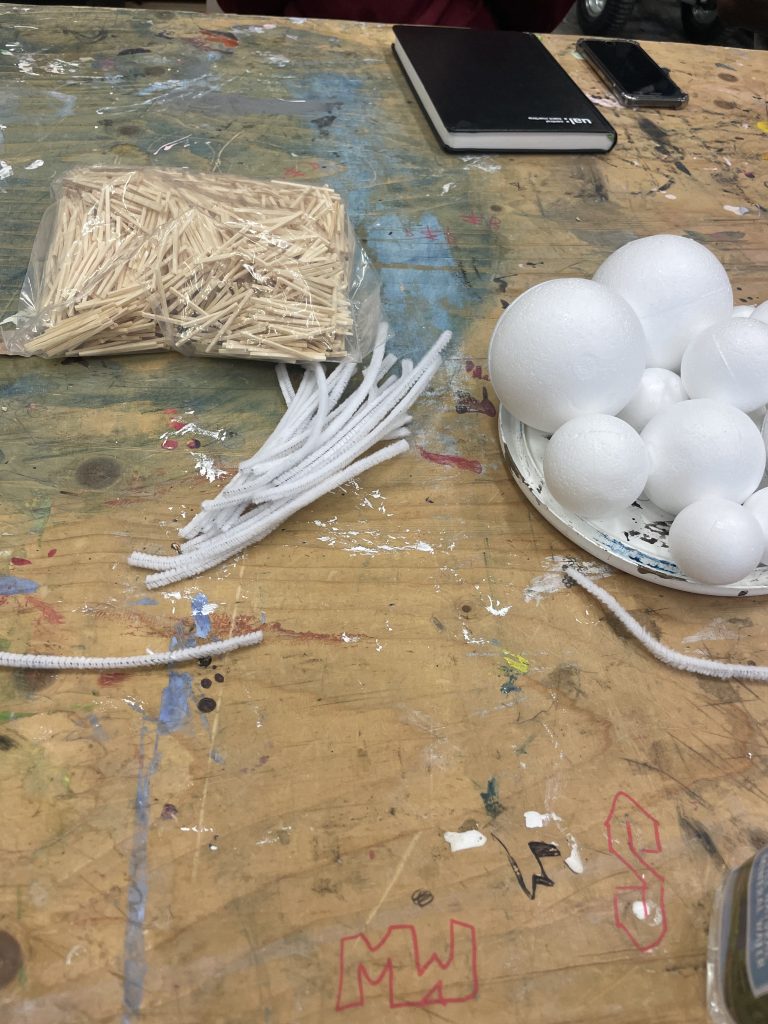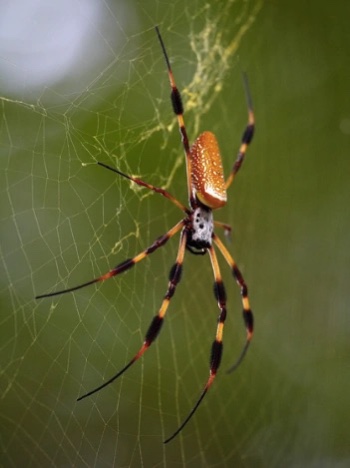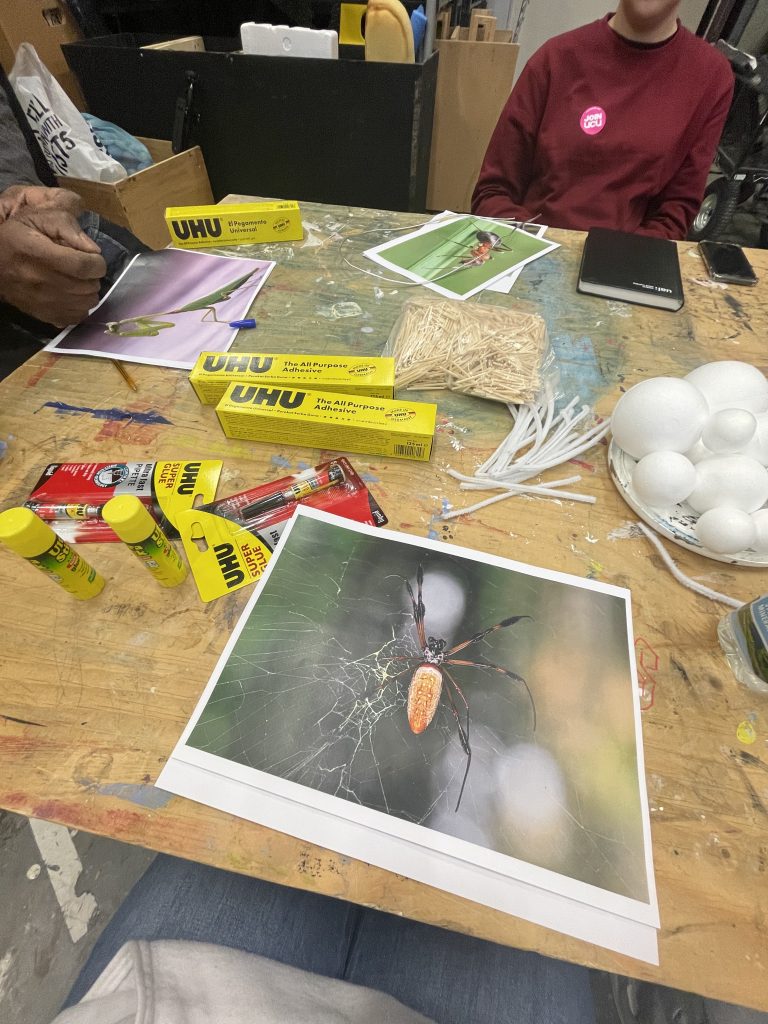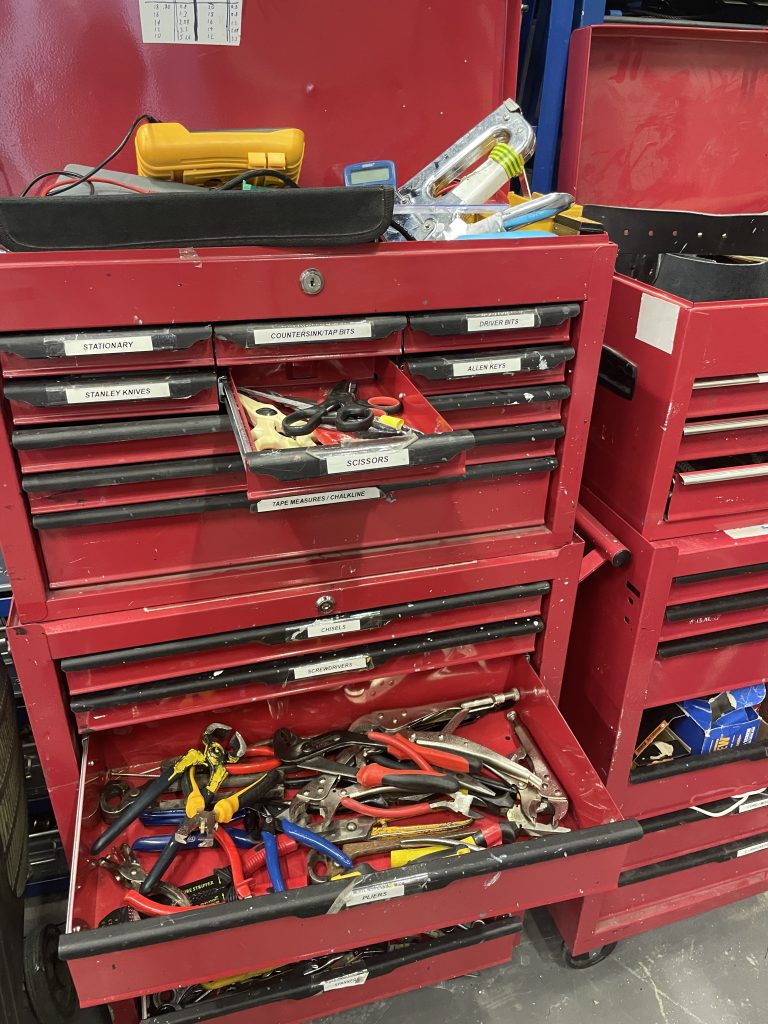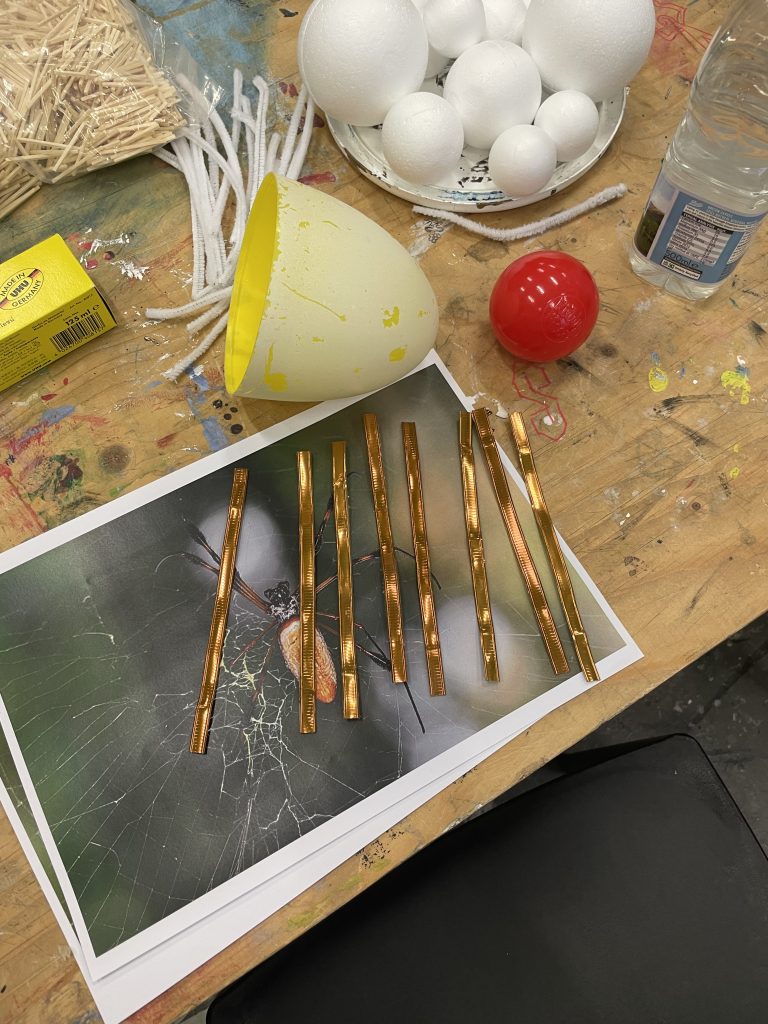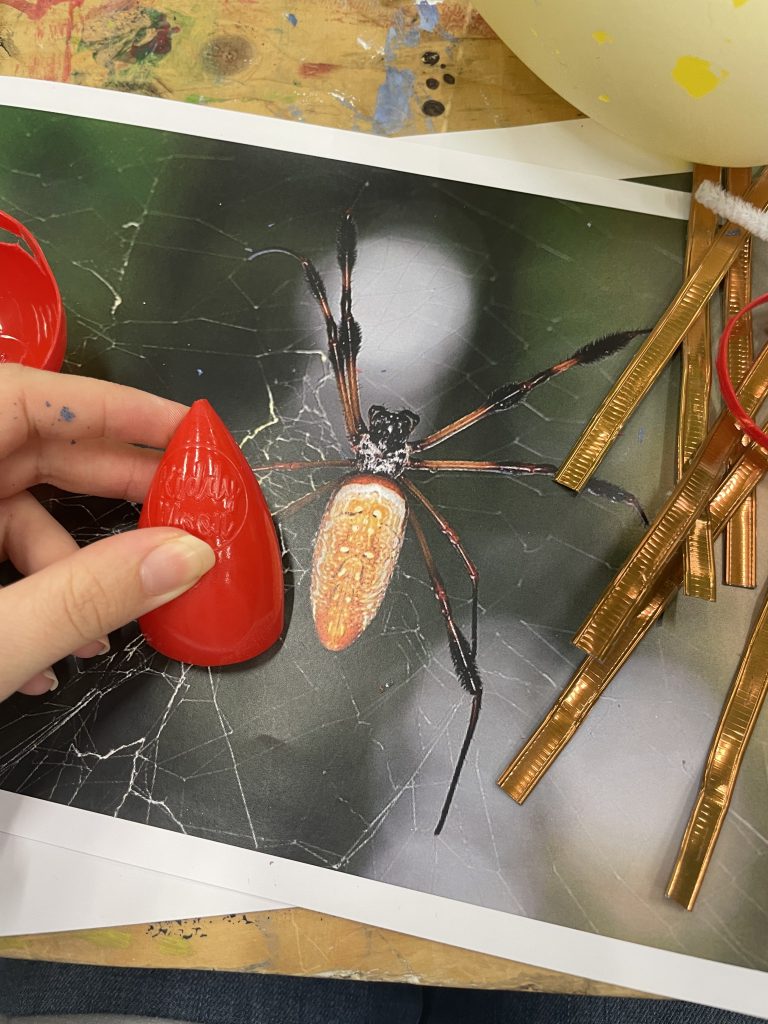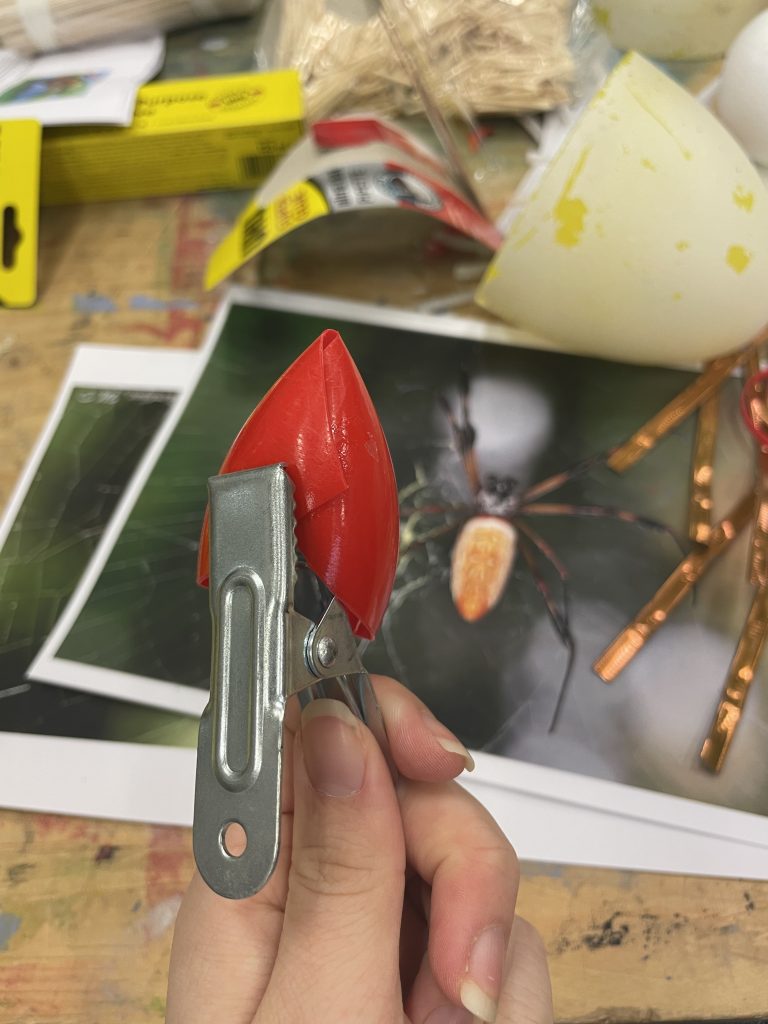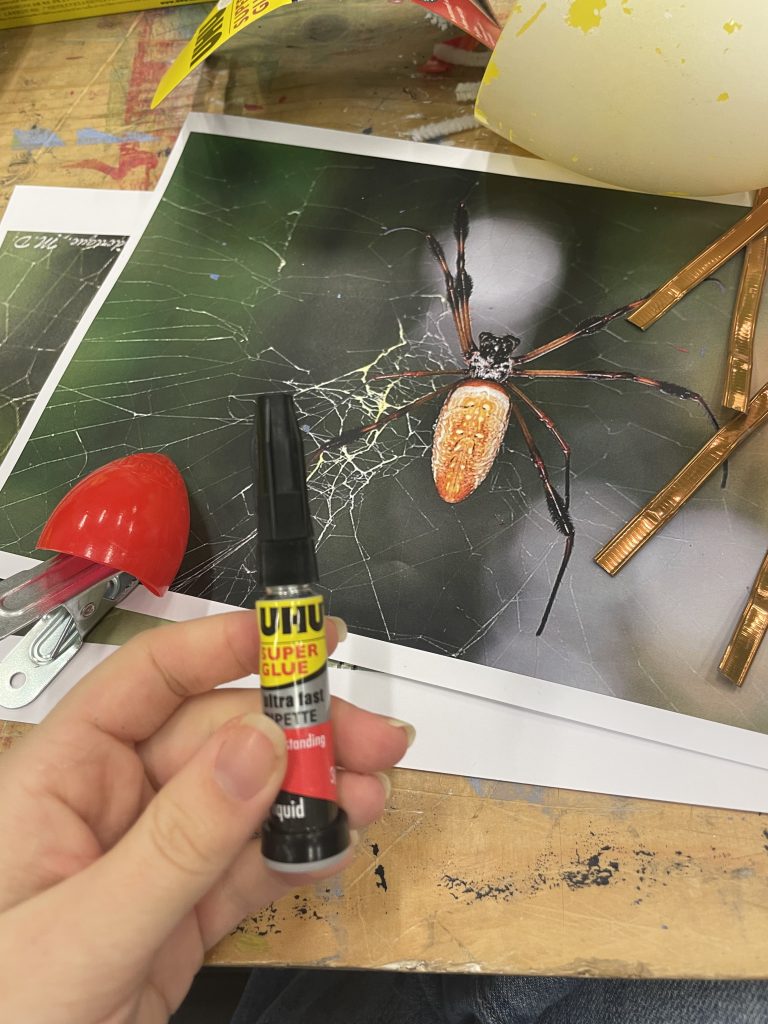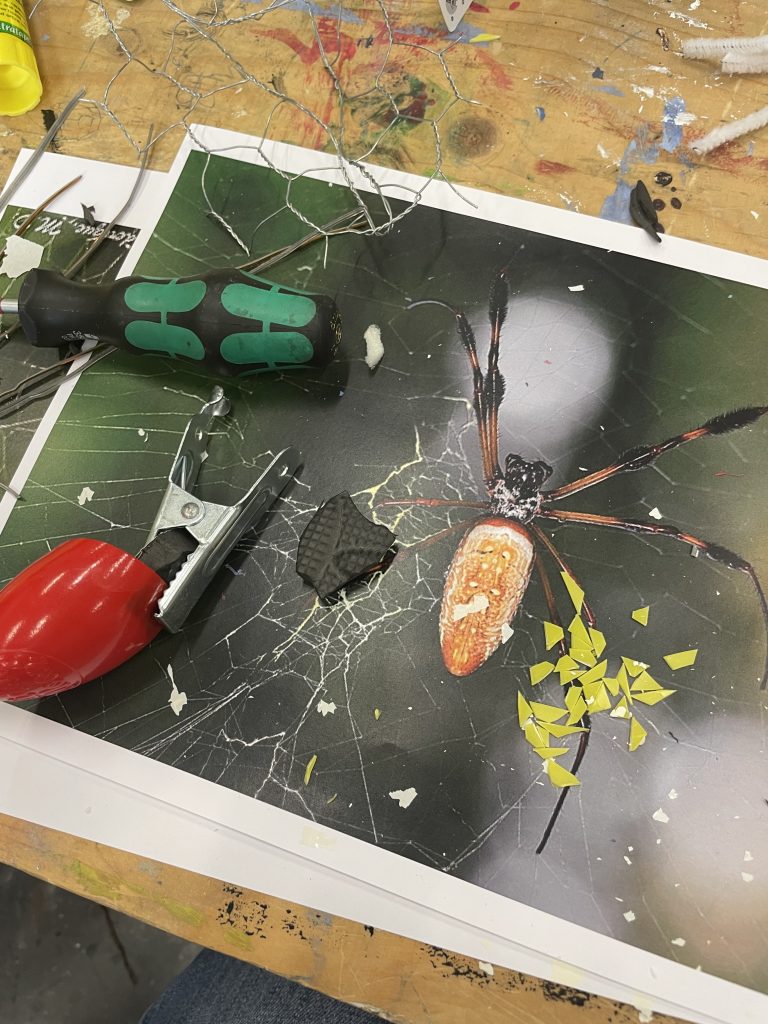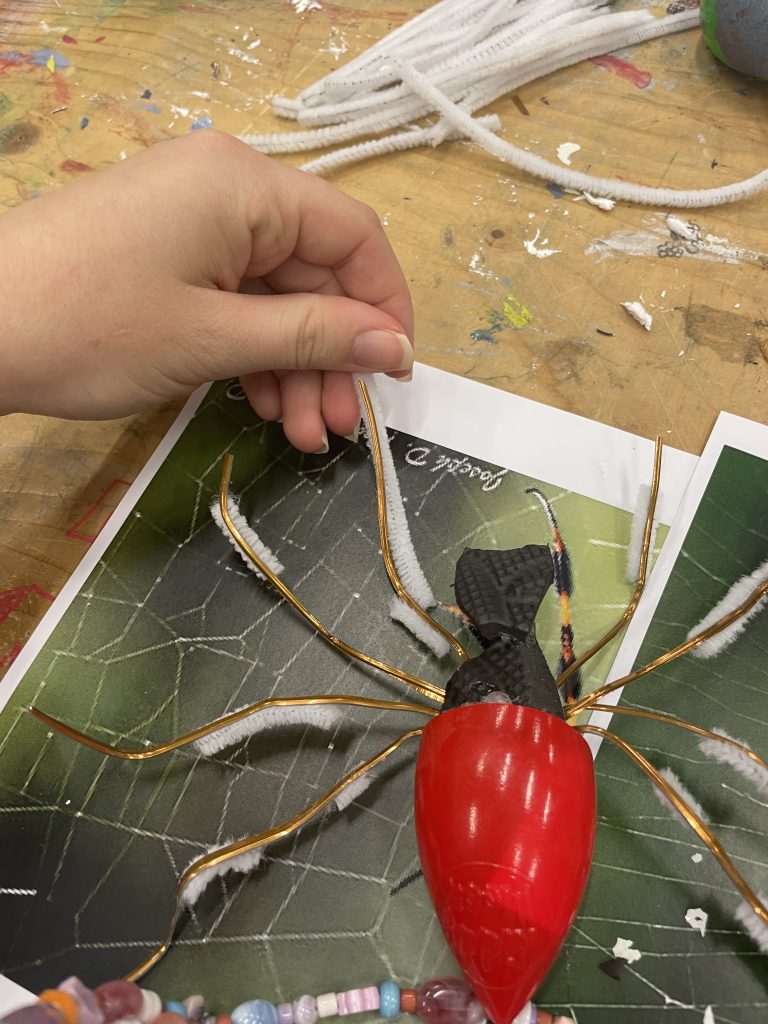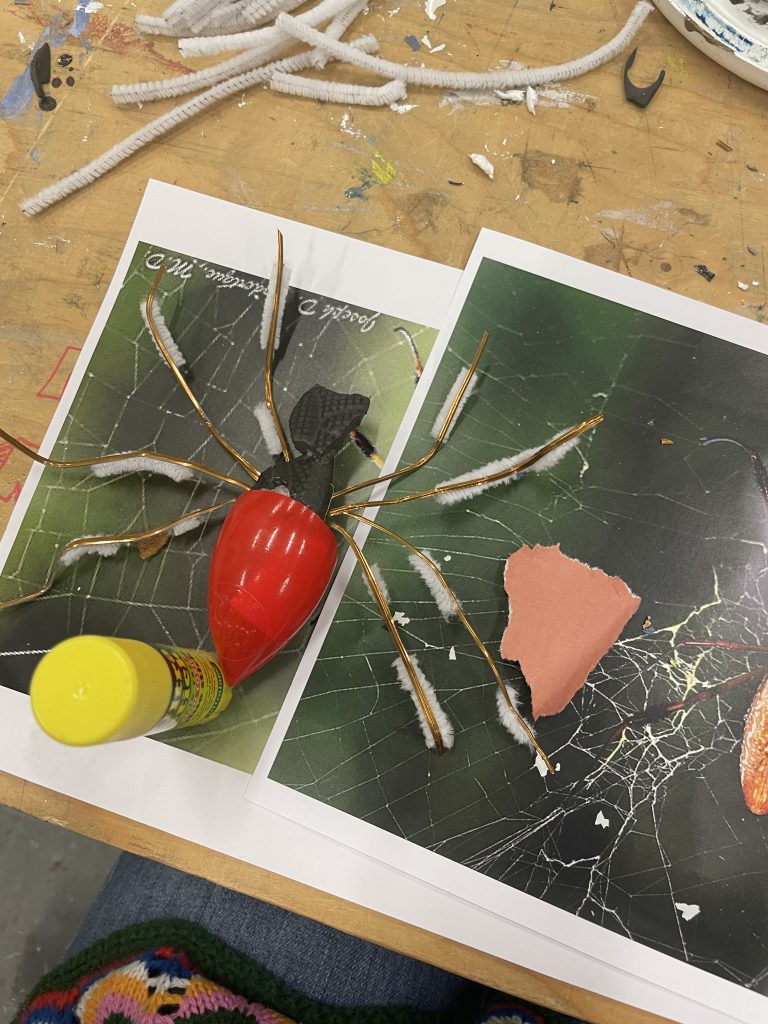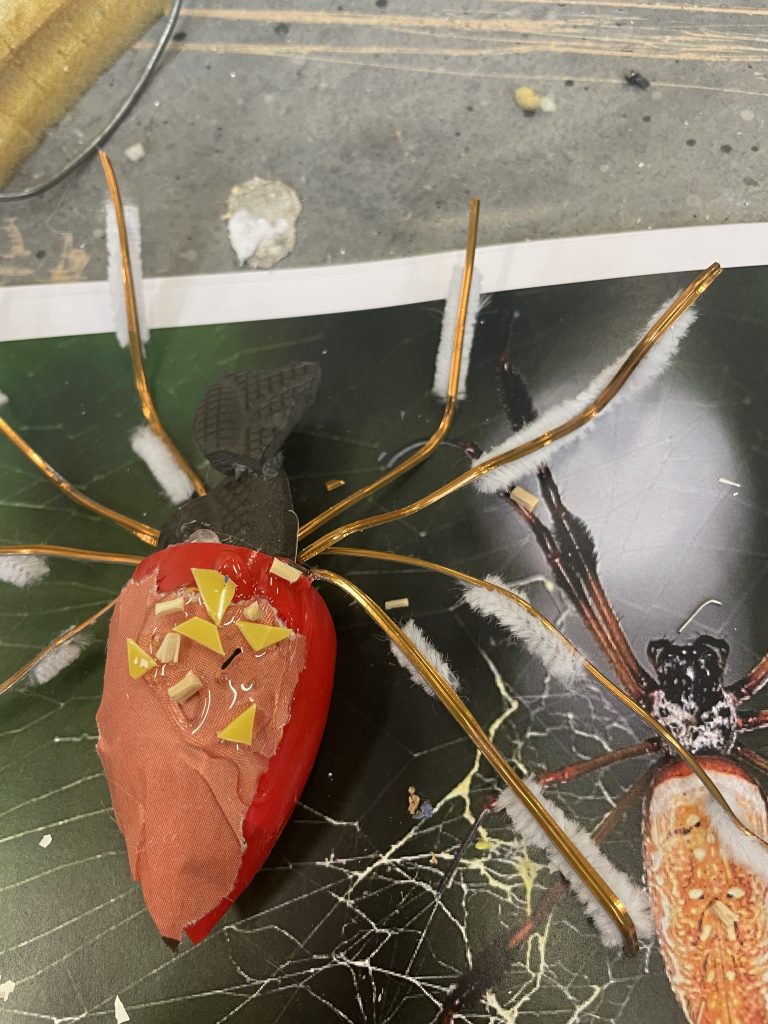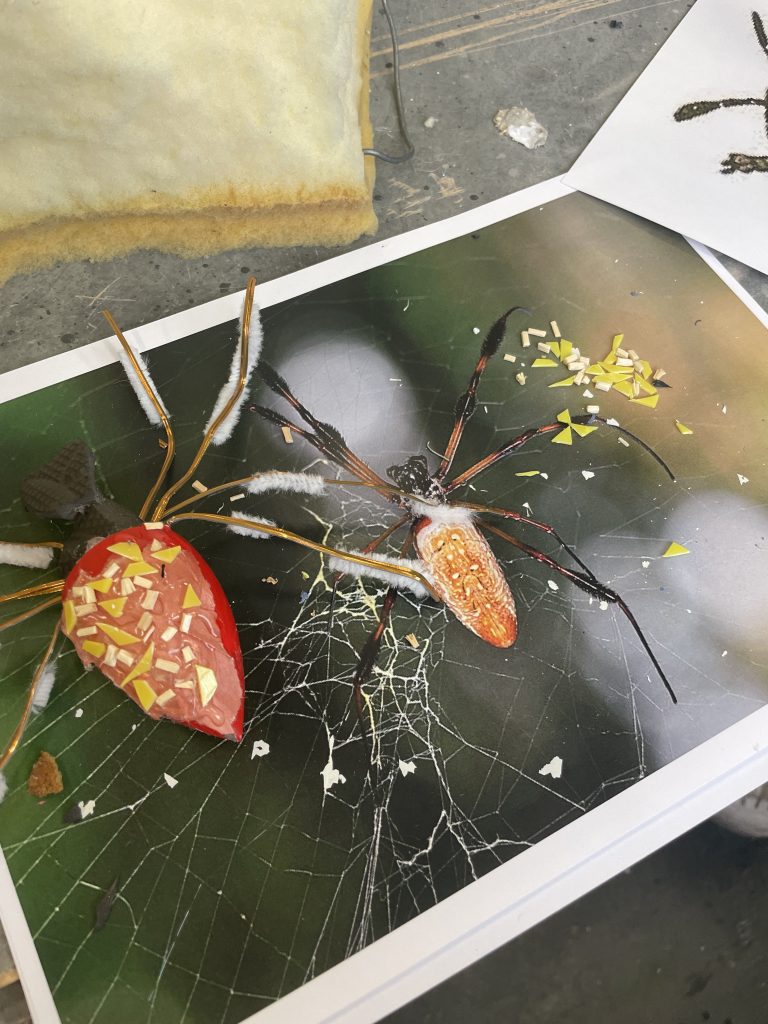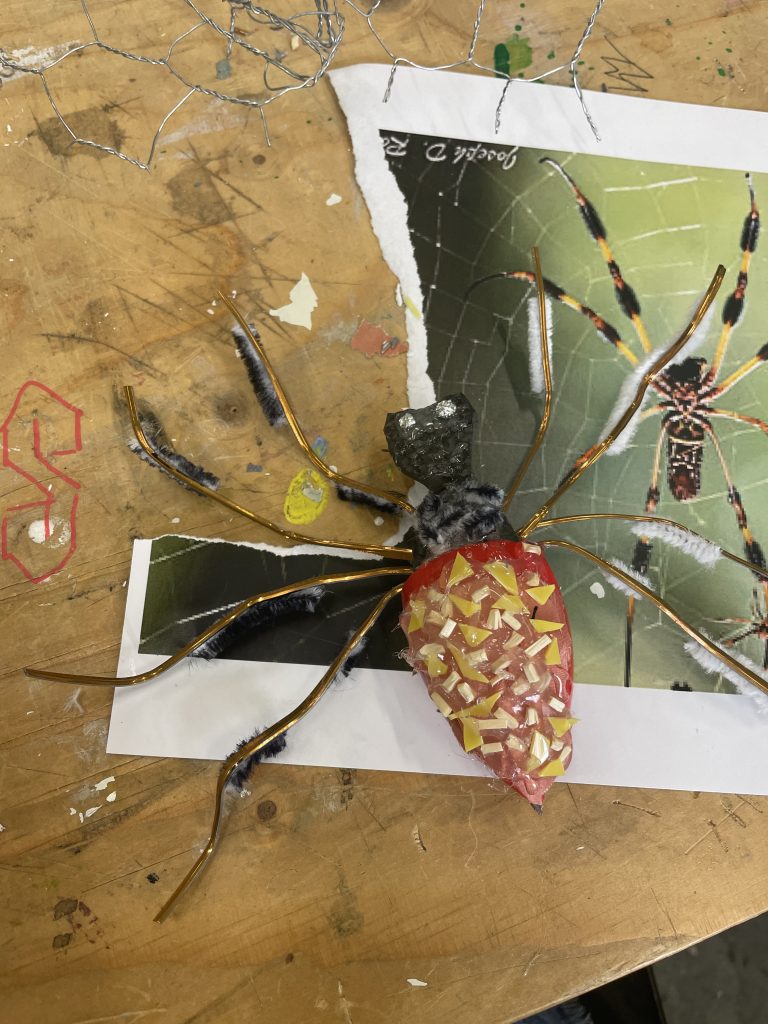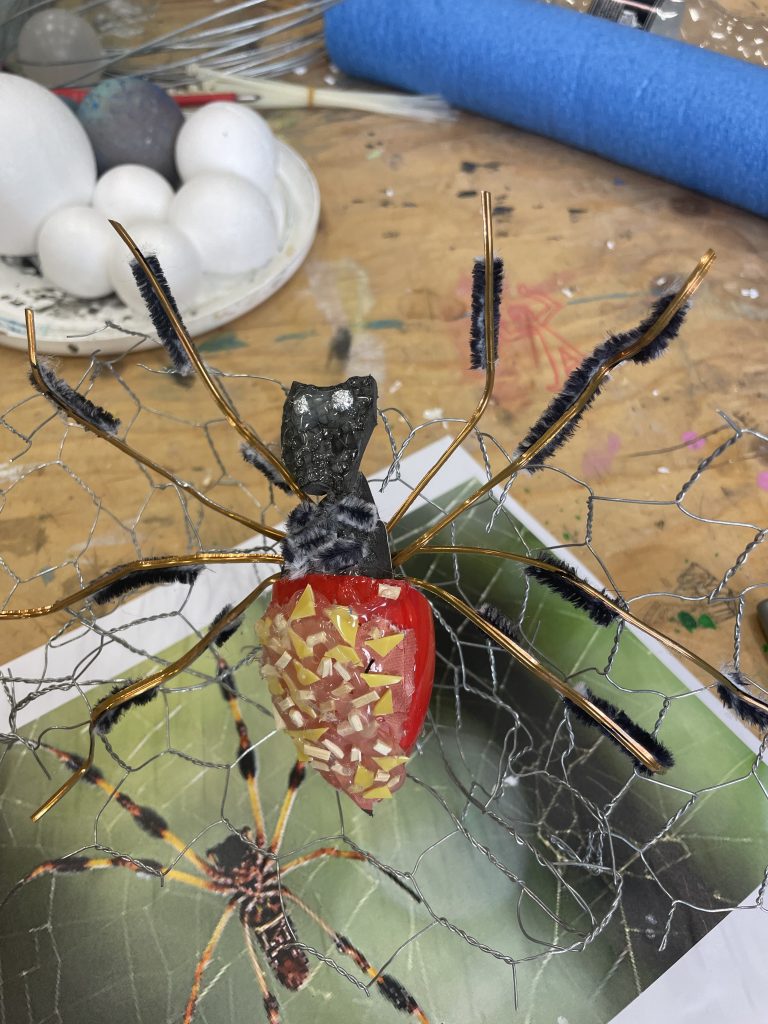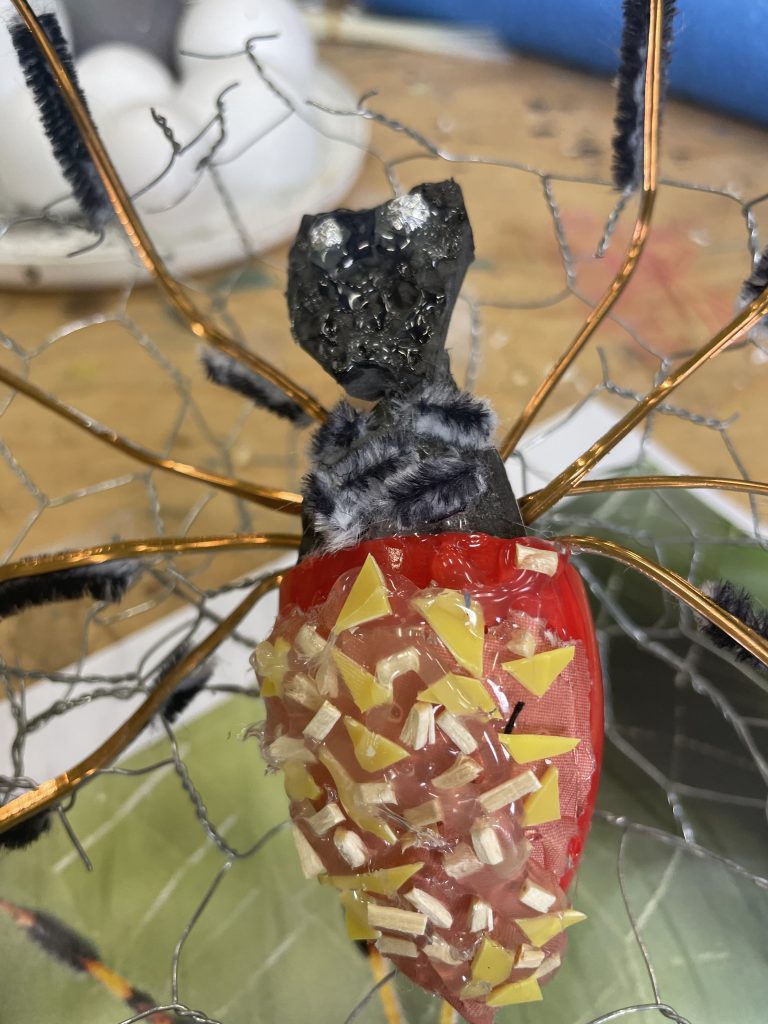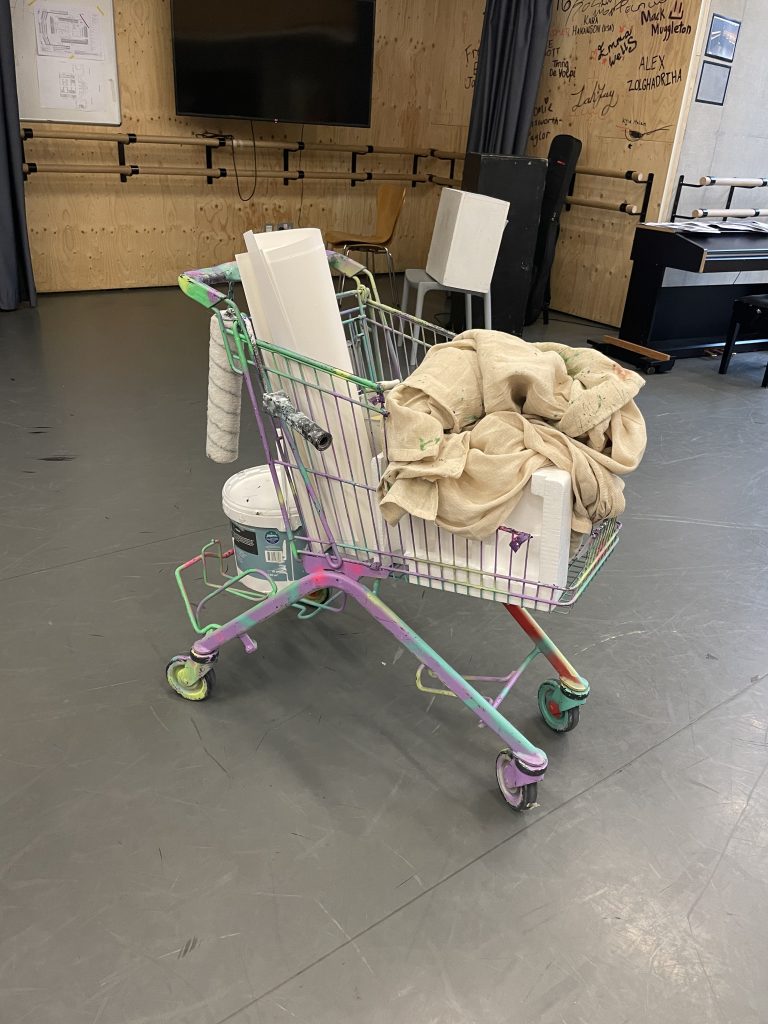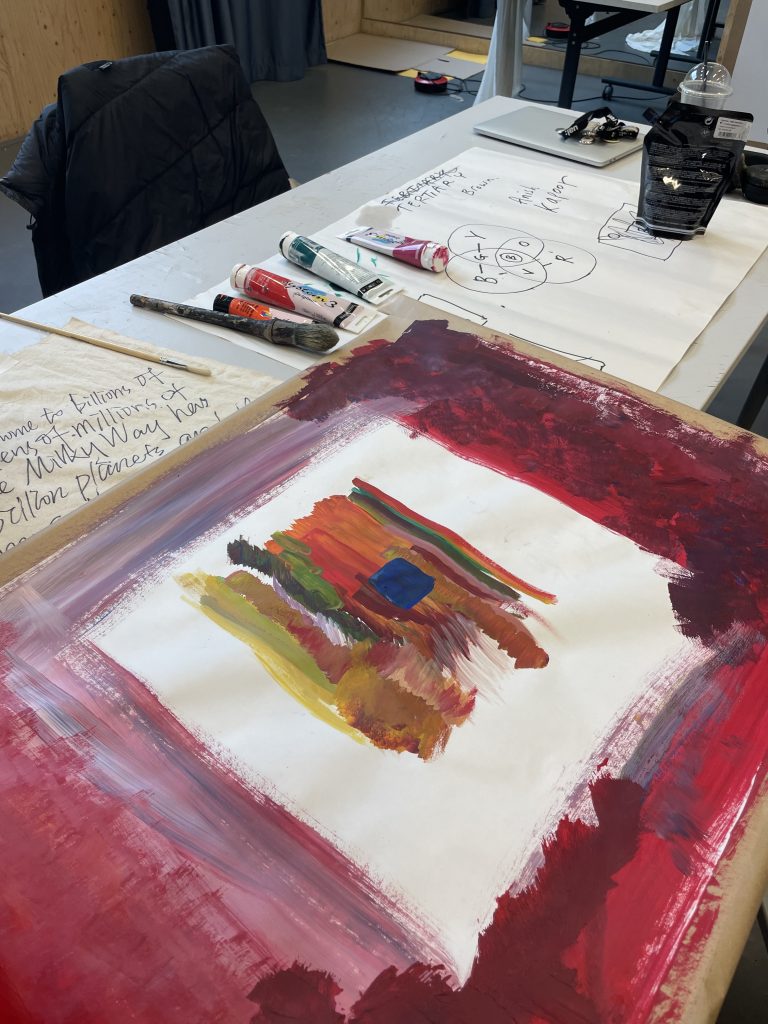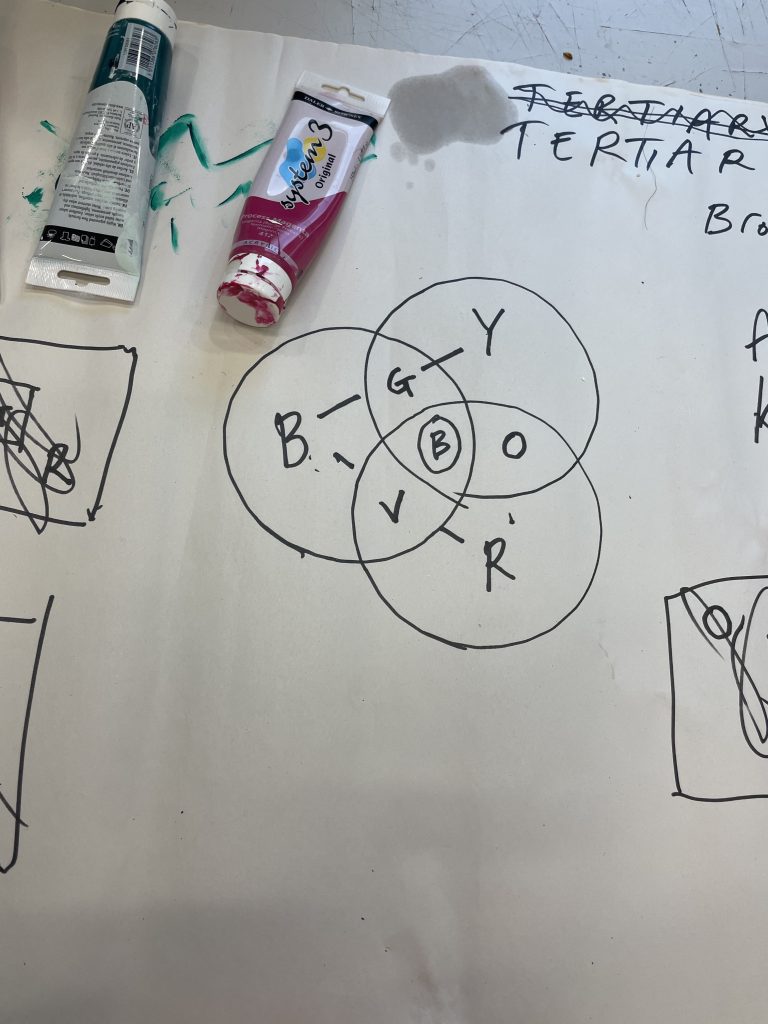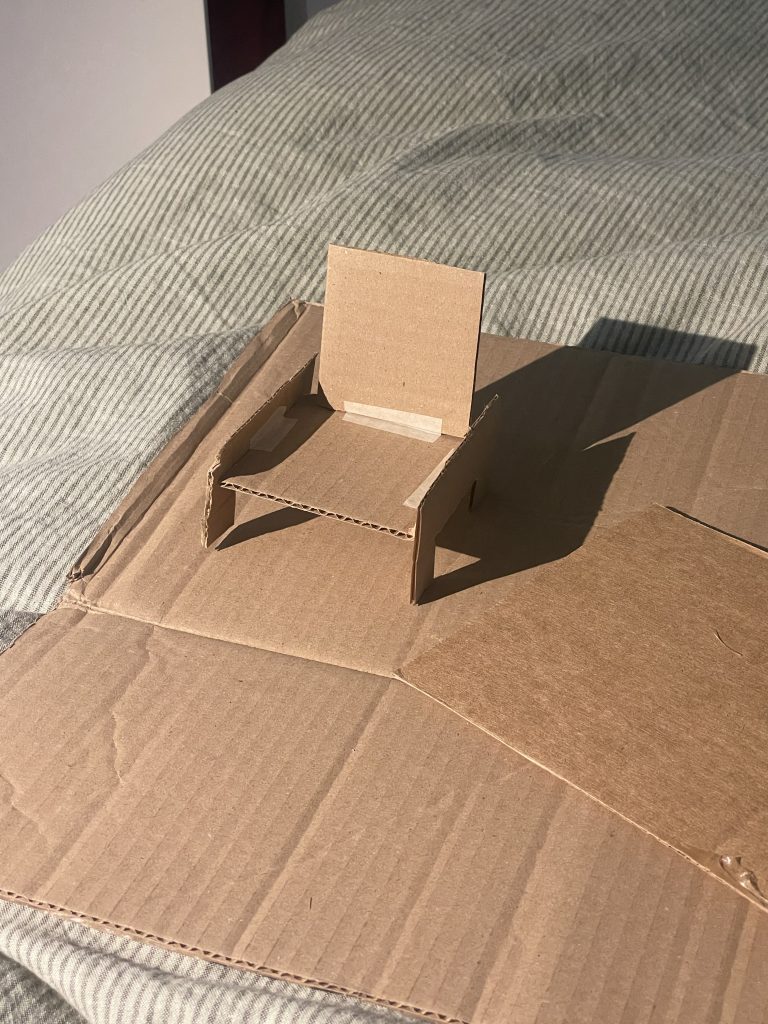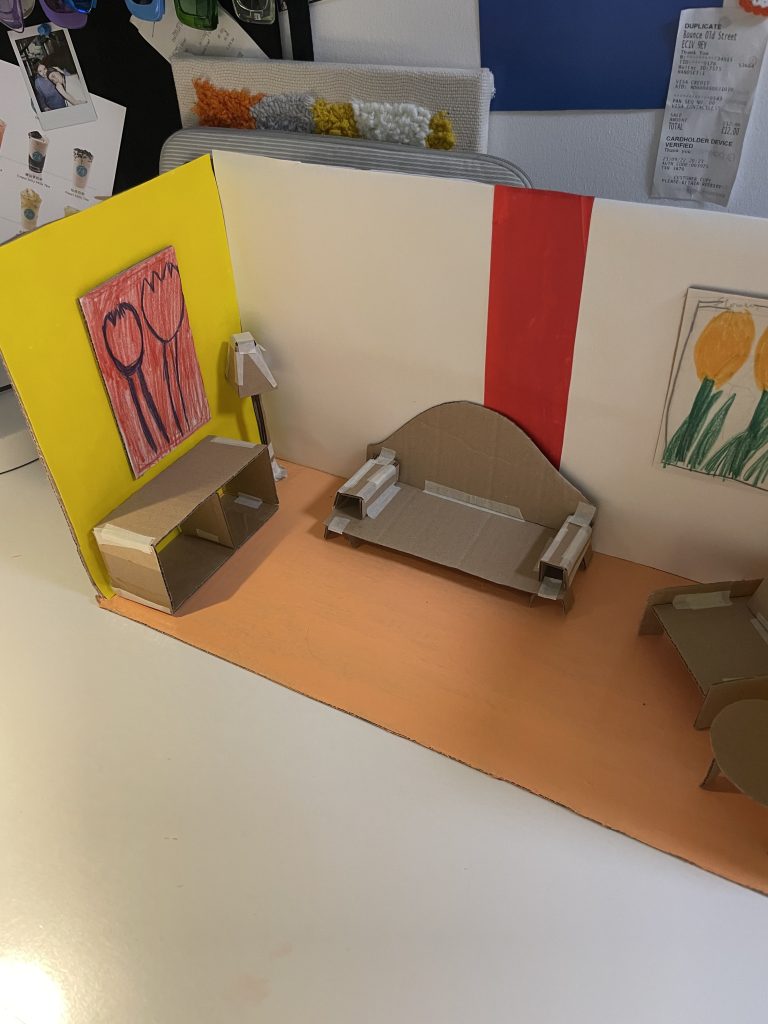Week one; ‘identity’. What it means, how it’s created and what purpose does it serve us? Those are the questions that first come to mind. That along with how does identity manifest for each person? Since all of us express ourselves and our emotions differently to one another.
In order to compensate for my lack of historical and theoretical knowledge on artists that have used this I began to do my own research. Within the brief we were guided to examine how performance can be used as a tool to represent our identities; that led me to Bas Jan Ader. His short film ‘I’m too sad to tell you’ connected to Stryker’s idea of ‘identity’, the theory that society itself impacts our behavior – maybe Bas was emotional because of an interaction within someone else. There must be a true reason for his sadness however it is not shared with us the audience. Performance acts as a sufficient tool in this sense because over ten minutes of footage was gathered, yet the final edited version only shows Ader for three and half, and at his most anguished.
Performance; in whatever discipline has the power to manipulate the audience to feel a certain way or see in a certain way. The ability to construct in such nature is what makes performance a tool for artists. Upon further research I stumbled across oil painter Jenny Morgan and her ‘Life Mask for the Doppelganger’ self-portraiture along with Cindy Sherman’s self portraits. She never shows her true self, her true identity and so the more we see the less recognisable she becomes, her ‘disguises’ comment on how female roles have previously been defined by society – to her, gender itself has been left unstable and constructed.
Valie Export came up alongside Cindy. Her photographs from the late sixties depict her legs slightly apart, her hands on her hips very unconventional for women in the media at that time. I admire how she played with the codes of gender; and with that the codes of identity. That is something I want to have more experience and technical skill in by the next mini project.
Thursday; a long day with almost too much stimulus. Was interesting to hear of a new way to store information – I had never before seen media categorized by subject instead of alphabetically through the author. While it is nice to hear that Warburg shared his collection of rare findings, he serves as yet another reminder of a rich man indulging in the arts because he had the freedom to do so.
You need to visit an archive like that with a specific subject in mind, I found that for me at least browsing without paying attention just made me feel lost and overwhelmed. Would have been good practice for Rosa to possibly tell us to come with a subject in mind – or assign us each to find a specific image. I also found it hard to engage with the British Museum, I didn’t find anything that related to my identity or ‘spoke’ to me. The museum was louder and busier than I thought it would be. Another reason I found it hard to engage with a specific art piece was the limited timeframe we had to work with, only having half an hour to look around a building of that size was too much to consider. I wandered around the section about Ancient Egypt first so that was the most fresh in mind – to represent that I sketched a collection of eyes on the page I was given; writing this now I’m realizing the span of emotions they hold match how mine have been throughout today. In the afternoon workshop with Kate we went through a presentation all about costume, none of the artists I knew of and I mentioned this to which she responded that that was a good thing! And that’s what art school is all about. It made me feel more reassured that I was supposed to feel out of my depth.
Friday acted as both a rehearsal and production planning day. To create the ‘Museum of You’ for tuesday, our group needed to figure out how we could each bring in our identities (and skills) while creating an installation to embody that.
We decided as a group of all girls to look back into our childhoods and how caring and nurturing for our toys shaped us; and then how that was almost violently stripped as an adult – into an activity deemed only for children. The circular teddy sculpture personally reminded me of a coven, or a ritual of some sort. Our group being all identifying females with she/her pronouns also made that connection. We decided to tap into the idea of creating an intimate installation like a bedroom; with me performing by sitting under a canopy or tent of fabric with the teddy sculpture and some electric candles. Doing so made this image of a cocoon. A skill I identify with and associate with my childhood is braiding hair and so writing this now on Saturday I’m planning to discuss incorporating this action into the installation for the ‘Museum of You’.
Originally we were looking into a dollhouse based performance, relating back to growing up from girls to women trapped in societal expectations – prescribed a role to play and thus trapped, like a doll within four walls. However with the materials we did have and the lack of time we didn’t have; it made more sense to create an open vision of bedroom for the audience to view, to appear like they were looking into an innocent scene and with that looking into their own childhoods. Before presenting on Tuesday we do still need to consider and finalise some set design and costume details but before the end of the day we had a tutorial with Rosa and that opened our minds to other ideas we hadn’t considered while providing encouragement because she supported us.
Tuesday morning; after arranging the ‘bed’ with candles and the pillars we realised how dark and juxtaposing the green tarp looked on top. With about an hour before presentation time, we divided the group into a set up production team and a team to collect all kinds of white fabrics. With that a safety pin patchwork tent was made and draped over the pillars – in doing so a canopy like installation appeared, the fabric edges acting as viewing lines to the audience. Outside of our group work, as a class we needed to assign an order in which to present and to tidy the room together. Anything not part of the exhibit needed to be removed.
Feedback/reflection:
- Nostalgic, toys transported us to back to childhood
- calming motion of the feather moving while plaiting dolls hair
- Appeared private, ,explores inner child
- voyeuristic, vulnerable, act of hoarding
- Childhoods make us who we are today was communicated
- Associated white with innocence
- The circle of toys were perceived as a barrier
- Interesting that there was different viewpoints
Could have considered:
- lightning
- Site lines, in what way
Random thoughts: Soundtracks as a methodology for time can come back to bite you in production, Statement backdrops can grow tiring. Are we working together in a brave space? An open space? The weekly projects provoke a trial and error approach











Gathered after lunch to hear the commutation brief summarised. Kane walked us through different references relevant to performance too; the discussion highlighted steps I hadn’t thought of: How does our tools for performance change depending on the audience? Is it for 5 year olds or readers of the guardian?
While writing a draft letter of some sort I needed to consider how should we as makers approach this? I needed to consider delivery and tone. We were given the opportunity to write our own letters in silence, mine consisted of questions I had about the universe – however when we came together again as a group I realised other people wrote about people close to them, it made me feel guilty about the fact that I didn’t.
Within our group of 4 we have decided to zoom in on ‘teenage angst’. How we viewed the world, what were we angry at. On tuesday I had a seminar with Ebun, in that hour we looked at how she would respond to Communication and covered Stuart Hall’s theory of semiotics; from doing A Level Media I was already familiar with his thoughts on discourse so this session in a way gave me an upper-hand because I could help others understand rather than feel like I have little to no knowledge as I did in Kate’s costume workshop last week.
By Sunday night we had gone back and forth between 2 ideas; a teen angst-style burn book similar to the one featured in ‘Mean Girls’ or a wall/installation of letters surrounding all the things we can think of in response to hate. Anything and everything that evokes a negative response. Lynn found a lot of inspiration from researching calligraphy and had the idea of decorating a wall, into a wall of hate. While I fully supported the idea as it would be more engaging and more of a live performance than a skit in response to ‘Mean Girls’ I didn’t want the paper to go to waste – would rather the paper come from waste. The solution was biodegradable rice paper, this not only provided a different texture to work on but overall gave a different more fragile aesthetic to the piece. While waiting for the rice paper to arrive we had the time to all think individually about what we hate. With this being a vulnerable topic it was important to feel safe and comfortable enough to be open and I did working in this group.
Between classes I decided to do my own exploration into what communication meant to me, and how other artists communicate. While researching Barbara Kruger and Jenny Holzer came to mind – both I had the opportunity to see in the Tate Modern. In terms of using paragraphs Sean Lander’s tongue-in-cheek confession also appeared. ‘Active Poetry’ by Ewa Partum appeared when researching artists inspired by poetry, her 1971 work consisted of scattering large cut-out single letters in a non-artistic space; like the open air, sea or an underpass.
Before becoming aware of the work by Anne Bean I had only considered formulaying a letter on an ordinary surface, however she broadened my thinking because of her art including writing small letters on her face in permanent marker and submerging underwater. I briefly explored multidisciplinary artist JoWonder, for the dreamy avant garde aesthetics only, not in response to communication. She looks to find ‘order out of chaos’ and ‘meaning from the absurd’. That search then led me to the 2015 music video ‘PUKI-JAM’ by Quilla Constance; both of these artists use such vibrance and hyperactive motion, noticing this pushed my want for our final piece to be the opposite.
Tuesday morning, we were given 45 minutes to set up our performances. Unlike the ‘Museum of you’ last week, we came together between every performance to reflect. Using rice paper, spare notebook paper and masking tape we created our installation ‘The wall of hate’ in the corner using the curtains. During our piece ‘everything about you’ by Ugly Kid Joe provided structure – a timeframe to the installation.
Feedback/ reflection
- Was confessional reading the statements, who wrote these?
- The placement and design was considered
- The light encouraged you to enter the space
- Audience had become the artwork by allowing us to rip the paper
- Lighting contrasted well with the paper
- Inviting atmosphere
- The music provided a beginning and an end
- The stakes shifted from just reading to ripping what you relate to












The power brief introduced the ‘Runway Ball’ for week 3. Kane and Liberty encouraged us to look at naming different types of power. What does power look like? How is the design received by the audience? At first my immediate thought would be to use red, no one inspiration came to mind so what was so enriching was seeing references Liberty had put together – they gave me a research point to start with, along with that a new term ‘architectural outfits’.
Becoming human geometry was mentioned also, the need to consider restriction versus extension. Ballroom culture was another concept I was exposed to as well. The power you want to feel or make the audience feel was something we were told to zoom in on, the power of power dynamics. During our Wednesday seminar with Ebun we went over the work of Michel Foucault and their response to power relations, the seminars being 2 hours instead of 1 means we get to look at subjects in greater detail and have room for discussion in between that we had to rush before. The references Liberty mentioned did excite me so I decided to gather similar images and research independently in my journal.
For our research trip we attended the Nation Gallery. The first piece we explored was ‘The Adoration of the Kings’ by Sandro Botticelli; she explained in Christian mythology how Jesus, the son of god was a prophecy that was fulfilled in a stable (aesthetically been elevated in the piece). I didn’t know that these paintings acted as evidence to the church. The kings highlight the power this god (in a babies body) has because royalty paid him a visit. The Roman architecture featured in this nativity scene symbolises the destruction of that empire, the widely accepted meaning is the crumbling of ‘pagan’ beliefs, negative labelling of any religion that wasn’t Christianity. The beliefs associated with these temples are being appropriated.
The more colourful a painting, the more expensive to produce. The most expensive pigment at the time being lapis lazuli (crushed up gemstones). The use of blue itself is power.
Rosa reminded us to really consider what materials we use and what they signify in relation to texture and colour. As a group we explored how paintings act as memes, they show whether you have the knowledge, whether you are in the loop or not.
The second ‘The Adoration of the Kings’ painting in the renaissance era depicts a more natural florentine landscape to represent Florence taking ownership of Christianity as the creative hub at the time. Power through nature. The ruins represent the humble becomings. The third painting by Paolo Veronese features a beam of light illuminating christ, the Roman ruins once again symbolise the triumph of Christianity. The date of the painting speculates how their honing details to the story as this piece came later, it acts as an establishing shot. 3 Black people are in this version; one of the kings actually became black a few years prior. Rosa is interested in this piece because of how it’s acknowledging how black people did exist in Europe and how artists were drawing from life – acts as a record. Was one of the kings Casper supposed to look like Father Time? Using recognisable characters to make religion more believable to people? The people kneeling depict that they are closer to God by being humble versus Balthazar who isn’t kneeling (he is further from God). The cherubs act as appropriating Eros (Cupid) from Greek mythology
- Júpiter and Antiope. Hendrik Goltzius
The next painting by Bartholomaeus Spranger shows the mannerist style of painting. It said the artist painting himself as the king in blue and yellow, contoured stomach and light shone on his face. Before leaving the National Gallery I took the opportunity
In the afternoon session Verity went through her own work process from our brief and why she chose cardboard for us. We can construct without the heavy use of time with sewing machines. She went stage by stage from the definition of power to historical figures associated with power; for example Julius Caesar or Queen Elizabeth I. She mentioned the longitudinal power of Abraham Lincoln’s top hat. Verity kept repeating language like expand and elevate, she wanted us to play with material and not just be a box. Encouraged to think about shape, detail and form.
I floated between draping cardboard and paper to a polystyrene mannequin before finding a white cardboard tube and deciding to construct some sort of binoculars. After watching ‘Phantom of the Opera’ at her majesty’s theatre a couple of nights ago I decided to construct a pair of theatre spectacles as if I were to watch it again.
Over the next couple days I carried out my own secondary research while our group planned what materials and existing sources (like a wig) we would use to create our costume. The Tate’s online resources took me from performance art to live art to actionism to arte povera.
On Tuesday morning we gathered our costumes and set ups together in the white lab. While already collaborating within the group with both Anna’s, Shan and Ezria I was asked if I could be apart of Mo’s performance last minute as one part of the pair hadn’t arrived. During the checkup it was exciting to hear that the performances would be scattered around campus- not just in the white lab itself. We had until 11:15 to get ready (change, prepare sound) before Mo’s performance inside the aisles of waitrose. It was so interesting to see during the ‘rehearsal’ time how each group took the brief into a different direction.
From a group on the terrace, to outside the pdp offices to blaring music In the street; we ended up watching the remaining groups in the white lab. While I feel like from my past experiences in textiles I could have been physically more hands-on this week, it was important to set a challenge for myself in the sense of control, stepping back and learning to work more collaboratively in a group; it’s something I don’t have much experience in.
Group 1 (Mo) Feedback/reflection:
- Feathers interrupted waitrose atmosphere
- We stumbled into a ‘happening’
- Enjoyed exploring consumerism in the piece
- motherhood, femininity energy
- Dramatic music
- The shades portrayed a gang robbery sort of aesthetic
- Mo’s Eccentric costume clashing with the everyday look of me
- Would’ve looked better if I had a costume or was covered to hide and avoid distraction.
Group 4 Feedback/ reflection
- linked to viewing politics as ‘15 minutes of fame’
- The performance felt stretched out, needed more structure
- One costume seemed to reflect rigid society and a younger more free generation taking over
- What function did the stray locks of hair have?
I wasn’t expecting to take part in a performance today but I’m grateful Mo needed the help, pdp so far has pushed me to be infront of an audience and while yes – this is a performance course, I hadn’t anticipated that. I’m glad.



































Our ‘mic night’ feelings brief commenced with Shnead O’Connor’s ‘nothing compared 2 U’; this radical solo performance was chosen by Kane because this song by Prince contrasted the stimulating 80s disco culture. Seeing this white woman with a shaved head wasn’t conventional and while the 2 tears on opposing cheeks seem fictional – there is a sense of vulnerability.
Kane elaborated how this week we should aim to move an audience, create a specific feeling. The thought of working alone was beyond daunting but reflecting on the project I think it was essential for me to discover how I could make an impact on my own. The emphasis of the piece requiring minimal set up told me that our tutors wanted the open mic night to be quite raw and less theatrical than previous briefs, it seemed like this needed to be more personal.
While drafting this day by day I wrote out ‘I had never preformed by myself before’ until I remembered that I sat alone in our group installation for our ‘communication’ brief. Except this time i thought would definitely be longer and more exposing for me, and I was right.
Ebun showed us a live performance of Sade – Pearls. I wasn’t aware of who this English band was. Ebun mentioned how she mirrored the movements in her performance. The most dynamic points in my eyes were when she said ‘hallelujah’, in those points her arms extend outwards – almost like a halo. “The easier the message, the more effective – simplicity is the key”. She reminded us how we should invest and always record our performances, no matter what length. These performances are better to have record of to look back on.
Watching ‘Bronx Gothic’ made me consider possibly using that style of lighting to conceal my face and thus feel less exposed while allowing me to be on stage for the open mic.
After feeling unwell and missing Wednesday’s seminar I spent the morning finishing ‘The Bell Jar’ by Sylvia Plath, because that was been all consuming in my life recently I thought about reading an extract from it. At first I was considering the first and last paragraph because as soon as I finished the book I felt like I was almost back at the beginning- seemed cyclical and like if Esther wasn’t too careful, history could repeat itself. While I appreciated the notion of a young woman figuring out her identity and the scientific reference of how being trapped in a bell jar prevented her from connecting to the world and on top of that showing a distorted view – the more I read over other peoples reviews the more I realised I was almost blind to the white feminism throughout.
I was coming to the end of my journals blank pages so I looked through it from the beginning, doing so reminded me of one of the first art performances I ever looked at: Quizoola!. This was an improvised 6 hour piece performed by individuals with clown makeup on. I decided I would film my own, much shorter version with a friend that had no idea this piece from 2003 existed. In the original Quizoola! One feature was the audience asking the performers questions – whether they knew the answer or not, I decided I would do this too.
The other performance idea I had was to create another short film about visiting the nation gallery again. When we went research ‘adoration of the kings’ with Rosa I was unaware that ‘The execution of Lady Jane Grey’ was kept here so I was upset that I was so close to being able to see it but hadn’t. Time constraints led me back to the national gallery piece idea, recording my quest to find ‘The Execution of Lady Jane’. I could be a proper tourist with a shitty Olympus camera.
That’s what I was thinking before I got sick. I now had the challenge of creating a piece from home or demonstrating what I would’ve done in my sketchbook. I blended a couple of videos from the summer – using software that made them appear almost illustrated; to acknowledge what didn’t get done I sketched my thinking process for the previous ideas. While I wasn’t there I do know that doing this showcase of sorts built a stronger sense of unity within the group, with there being one more brief until the new brief in the new year it came at the right time.
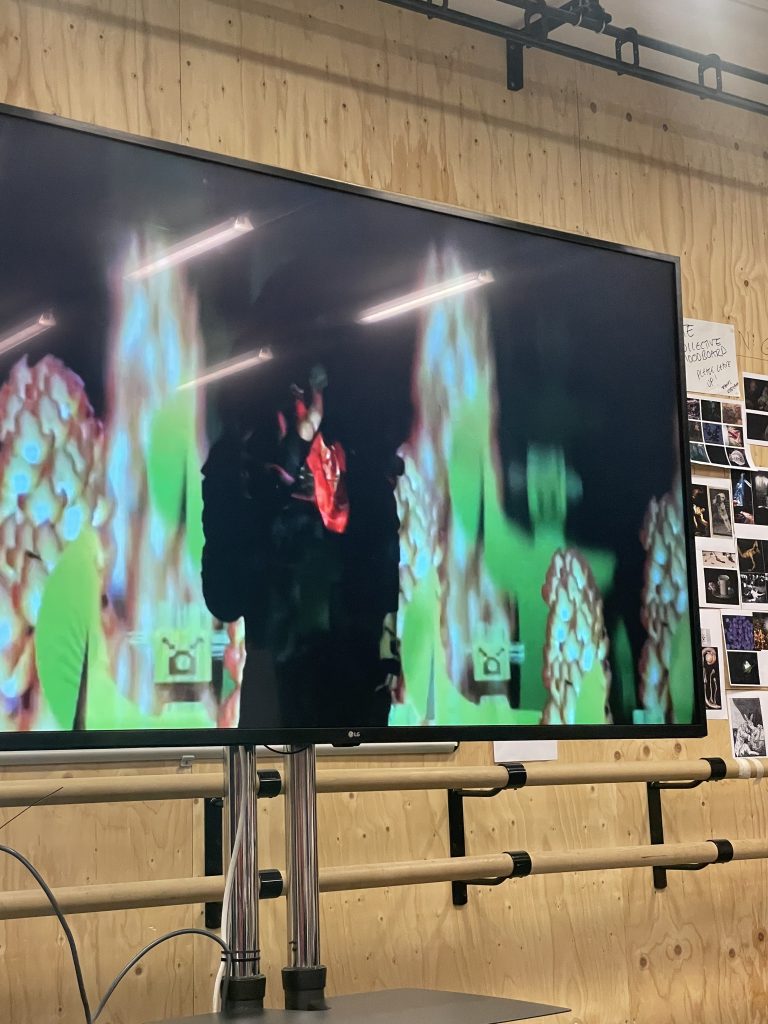
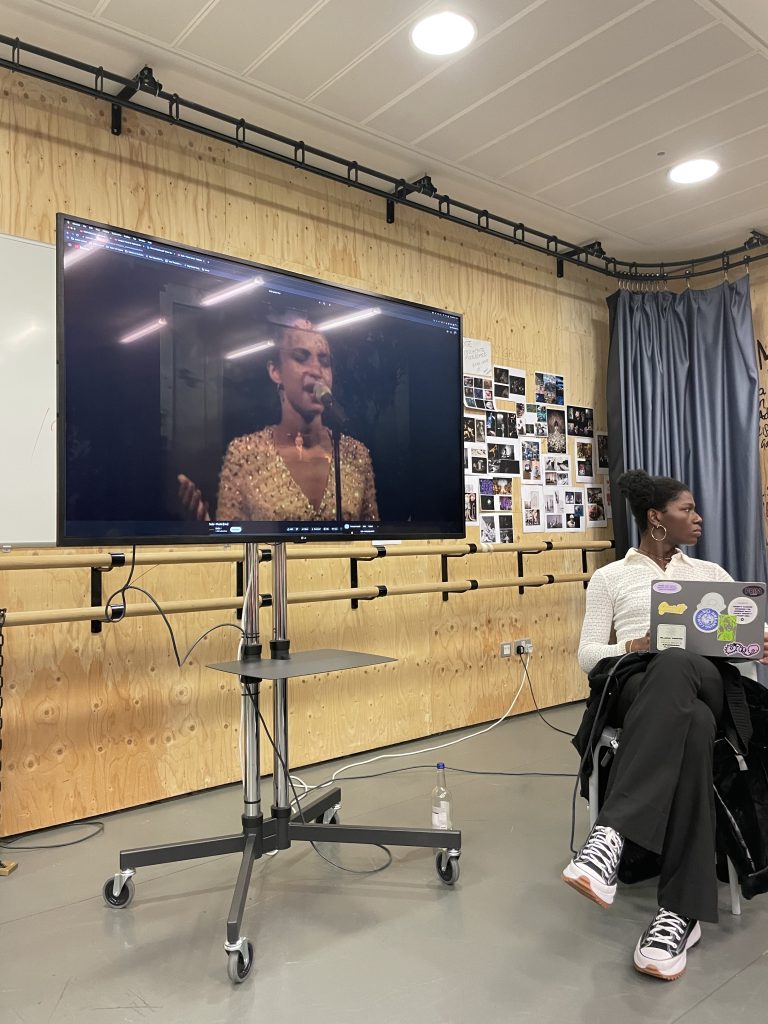
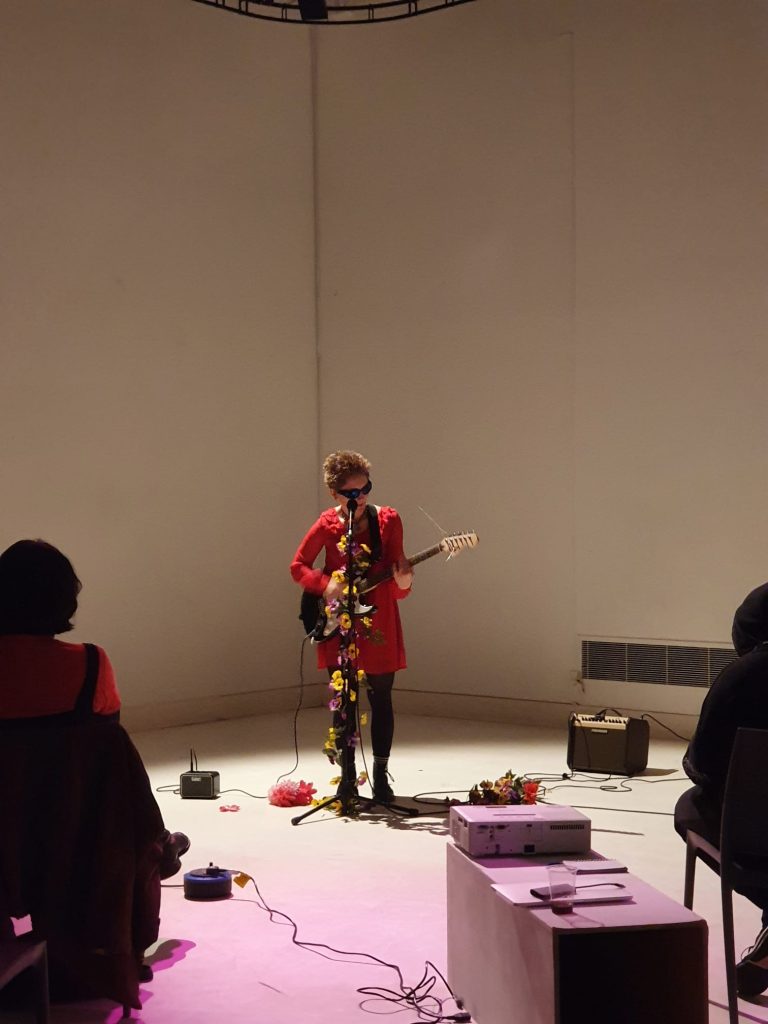
Matierials week; the opportunity to indulge in a more hands-on craft in relation to our practice. What I was looking forward to this week was knowing that after making our creations, we would discuss our points of inspiration and how we approached crafting as a group. I was curious to hear how another persons research approach would be different to mine. The order, the chosen media’s to research would all be different.
An object can act as a performance in itself so it was important to me to document how something big or small could provoke a discussion. I was eager to get feedback on something I’d made myself as up to now much of our feedback had come in groups.
Wednesday morning began behind the platform theatre. We were instructed by Michael to pick an insect to try and reconstruct on a bigger scape out of random materials around the room. The tutors informed us that they picked bugs because they come in all sizes and colours. To what size I decided to recreate my golden silk spider was up to me. The premise of this workshop was to explore and adapt textures and objects we had free access to. Encouraged to be as creative as possible while working as safe as possible with others in the room.
“You ultimately need to start with structure, what is the fundamental structure to start with”. From all of my reference images the golden silk spider is positioned within a web it’s constructed so I decided to use chicken wire as both a background and form of display. I found some bendable copper wires to use as the legs, I had the idea of gluing pipe cleaners to the other side. It was hard to adhere the plastic together and to other materials to form the insect, that’s when I used a drill to put a screw through the layers into a block of wood – UHU glue didn’t work. Using some black polystyrene I constructed the torso and head – these were adhered using hot glue as none of the ‘cold’ industrial ones would. Once the body was formed I moved onto attach the 8 legs from the back with hot glue too. Because of the length of the legs, the chicken wire web wasn’t big enough to match the surface area so I needed to mould more together. By the end of the session I was ready to focus on adding detail tomorrow.
Thursdays focus was adding texture, pattern and colour to my insect. After learning about how domestic some spider types appear versus others that aren’t, I thought why not create a small living room of sorts to reflect how a golden silk spider isn’t domestic, but based in South American rainforests instead. I had never created a model or some sort of set before and with previously focusing on textiles I hadn’t got to explore what I could do with cardboard other than the short workshop with Verity for costume. Both Michaels didn’t want us to buy anything for the art store, while that limited us in terms of resources it meant we had to be more ambitious in adapting materials. Using pipe cleaners we were given yesterday I began to cut up and attach this texture to the back of the copper legs which conveniently was adhesive on the back. After that using the hot glue again I added wood chips and bright yellow plastic fragments onto the back of my spider, just under this sits a layer of newspaper in a similar shade as the colours in my reference images. In my eyes to have a complete spider I needed to colour the pipe cleaners black, that would also make the tinfoil eyes shine.
I had finished my insect before the end of the first session so I had time to prepare for an academic support workshop I had during lunch. I asked if I could observe Peter’s painting group after the workshop to try something new.
In Peter’s workshop the objective was to take a tradition art form and make it performative. Peter’s group were given the primary colours and instructed to paint with the primary colours on stretched art paper. The aim of their work was to explore set design by using what they had painted as backdrops for activity in front. I wasn’t sure at this point if I wanted to combine the insect workshop with the philosophy of set painting and design. I had plenty of cardboard to reuse and paints to add colour.
On Friday I started to create a living room, domestic space for the insect. Using cardboard id kept from parcels I constructed a base before painting and layering sheets for wallpaper. I wanted the model to be colour so I looked for any old drawings to cut out and hang as pieces of art. Once again with cardboard I began to put together pieces of furniture using slim masking tape, attaching strips to either side for support. From a collection of paper scraps I found photocopies from Ebun’s seminar on Foucault, this was cut up to mirror a newspaper. I had painted 2 of the 5 pieces of furniture but thought how it looked more detailed being able to see how they were made so I decided to keep the rest brown and scrap the painted ones.
On Tuesday morning we all came together to show what we had externally made and internally realised from this week; I only brought in Sandy the spider holding his newspaper because I couldn’t find a bag to transport his living room. Yeukai proposed discussing ‘what we learned aside from the technical workshop’ along with Ethan adding ‘are these skills were going to be used in our practices in the future’. We thought about how there seems to be a preconceived notion that you can’t interact with a stationary object, however I think you can take something static and give it life, give it more motion and purpose. Either way the bugs are still valid even if they don’t move. The group liked how I’d taken an insect based in the rainforest of a hot climate to constructing the bug in a living room relaxing and performing a domestic task like reading a newspaper. Spiders of all kinds often carry negative connotations to people – fear being one of them, my personal love for spiders motivated me to display a spider in a much more gentle and approachable way.
From coming together I got to see what had been created by the costume group, I’m jealous at the fact that they got to make their own bags and get to use the heat press so during the extended project next term I’m determined to use it. I think I’ll make a list of what I want to explore by unit 3. Peter appeared in time for the painting group to show their work, without being in his class I learnt how there’s 2 ways of painting; dark to light and light to dark. He also explained how if primary colour pigments are pure and exact – they will mix to black, if they aren’t pure it will mix to brown.
